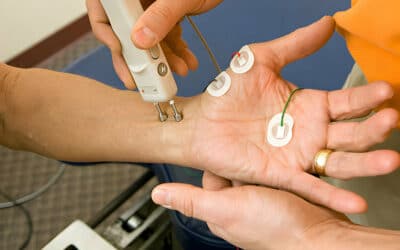Spinal stenosis is a chronic condition that can cause chronic pain in different parts of your body. Read on to discover what happens if you don’t treat spinal stenosis and where to find the right treatment.
What Is Spinal Stenosis?
Spinal stenosis occurs when your spinal canal becomes more narrow. That can result from an injury or a condition where soft tissue or bones obstruct the spinal canal, pressing onto the nerves. As a result, you may feel back and neck pain, muscle weakness, numbness, and other symptoms.
If the spinal stenosis becomes so bad, it can lead to a condition called myelopathy. This is a medical term for severe spinal cord compression that can result in permanent damage and terrible health outcomes.
Spinal stenosis is a serious condition that occurs due to the narrowing of the spinal canal.
What Are the Symptoms of Spinal Stenosis?
Depending on the location of compressed or irritated nerves, you may experience different symptoms and their intensity. They can appear in bursts or slowly progress over time and become more intense.
The most common spinal stenosis symptoms are:
- Back pain
- Lower back pain that radiates through your buttocks down your legs
- Numbness
- Frequent cramps
- Balance and coordination problems
- Tingling sensations
- Muscle weakness
- Loss of bladder or bowel control
Spinal stenosis mostly occurs in the lumbar (lower back) or cervical (neck) portion of the spine. Based on that, your doctor recommends the best treatment approach that can include medication, injections, physical therapy, mild® treatment, or surgery.
Your spinal stenosis symptoms depend on the affected spinal area. The compression severity determines symptom intensity and frequency.
What Happens If You Don’t Treat Spinal Stenosis?
Some people don’t experience any symptoms after developing spinal stenosis. However, the condition usually progresses with time, and the symptoms become visible and more intense.
Spinal stenosis is more frequent in people over 50 because tissue wear and tear becomes more common, and people are likely to suffer from conditions that can trigger the onset of spinal stenosis.
If you don’t get the necessary treatment, you risk a life of pain and discomfort. Sure, there may be periods when the symptoms subside, and you think you are over it, but they will come back, and the pain is only going to get worse. In fact, it may get so bad that you have a problem walking even for a few minutes.
In addition, the progression of spinal stenosis makes muscle numbness and weakness more frequent. So, you can say goodbye to the activities you love, like hiking, biking, and playing sports. Your life will become more sedentary, causing you to gain weight. As a result, you’ll face several health problems.
More severe cases of spinal stenosis lead to disability and balance problems. This can make it hard for you to even stand up.
If spinal stenosis affects the nerves responsible for bladder and bowel control, you’ll have problems controlling these body functions.
People who don’t seek treatment for spinal stenosis risk chronic pain, disability, balance issues, and bladder and bowel control loss.
Getting the Right Spinal Stenosis Treatment
If you’ve been diagnosed with spinal stenosis or have some of the symptoms pointing to this condition, seeking adequate treatment is a must. You can find it at Space City Pain Specialists, where a group of experienced specialists helps people overcome chronic pain.
We offer an innovative mild® treatment that shows excellent results and quick recovery. Contact us to learn more about mild® treatment and see if it’s a good fit for you.



